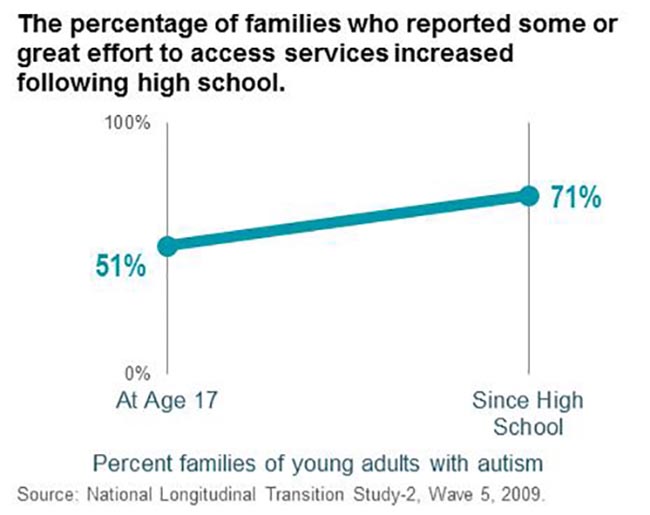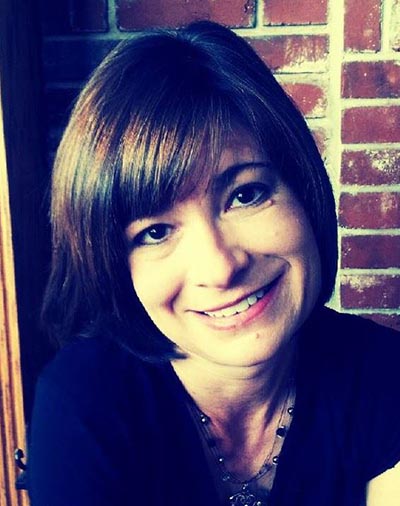Falling Off the Services Cliff
Anne Roux
Posted on
August 31, 2015
It seems like parents spend much of the teenage years anticipating whether and when their child will leave home and become independent. Many with hope. Some with doubt. But for parents of students with autism, there is often dread regarding the transition from high school into adulthood, which is sometimes described as falling off a cliff. Here’s why.
Many high school students on the autism spectrum get help through special education – most commonly including speech-language therapy, service coordination/case management, behavior management, and special transportation (Wei, 2013). Each student has a team that works with the student and family to decide which services are needed to prepare him or her for young adulthood, and federal law requires schools to offer the necessary services. Sounds like a good plan for how to help vulnerable youth through a challenging period of life.
But then, following the last day of high school, the legal mandate for help suddenly ends. There is no federal requirement for providing supportive services in adulthood. Many services for adults with disabilities use different eligibility rules than in special education. For example, eligibility for many special supports in adulthood requires having an intellectual disability. However, the majority of today’s youth with ASD do not have an intellectual disability, although their communication and social impairments significantly interfere with their ability to get a job, go to school, and live on their own.
 Even when transition plans are in place and youth do qualify for supports and services, the numbers reflect that help is not always available (National Autism Indicators Report, 2015). Seventy percent of families report that “some” or “great effort” was needed to access services following high school. Over one-quarter of youth on the autism spectrum receive no services once they reach early adulthood. Among youth who do not successfully connect to a job or continued education after high school, 28% never received any services after leaving high school. Not one.
Even when transition plans are in place and youth do qualify for supports and services, the numbers reflect that help is not always available (National Autism Indicators Report, 2015). Seventy percent of families report that “some” or “great effort” was needed to access services following high school. Over one-quarter of youth on the autism spectrum receive no services once they reach early adulthood. Among youth who do not successfully connect to a job or continued education after high school, 28% never received any services after leaving high school. Not one.
Services for young people on the autism spectrum often seem least available when they are most needed, leaving struggling families to navigate on their own. During high school, students may have received therapeutic services (speech-language therapy, occupational or life skills therapy, physical therapy, vocational services); health-related services like diagnostic medical services; personal counseling (psychological or mental health, or social work); access/mobility services (transportation, assistive technology services/devices); personal assistance (in-home or classroom aide, or respite care); or case management – often to help families find supports. When families are unable to access any of these types of help after high school, this likely contributes to the failure of too many youth with autism to launch successfully into adulthood.



And that is exactly why parents feel like their children are about to fall off a cliff. They see very little help ahead.
The creation of effective transition planning and programming to meet the needs of the 50,000 individuals with autism who leave high school each year - each with unique strengths, interests, and challenges - is an urgent task facing our society. It is solvable, though. Communities could enact plans to better scaffold transitions and monitor results, so fewer youth would fall through the cracks in our systems and more families might see bridges on the horizon instead of cliffs.
 Anne Roux, MPH, MA is a nationally renowned autism researcher, author and family advocate. She leads the production of our National Autism Indicators Report series and other publications.
Anne Roux, MPH, MA is a nationally renowned autism researcher, author and family advocate. She leads the production of our National Autism Indicators Report series and other publications.